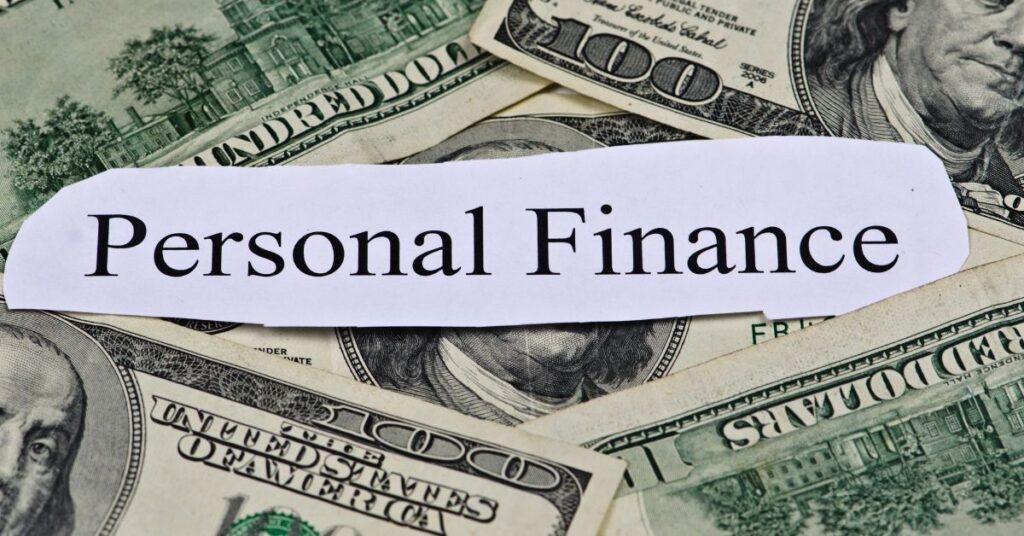You might run a one-man shop from your spare room. Or a growing LLC with two guys on payroll. Either way, mixing cash is a slow leak. It blurs taxes, weakens legal shields, and makes you guess at profit. Let’s fix that. The aim is simple. After you read this, you can start separating business and personal finances today, with fewer headaches later.
Why this matters more than it seems
If you ever form an LLC or a corporation, you promise to keep business life and home life apart. Courts can set aside that shield if you blend funds. Lawyers call it “piercing the corporate veil.” Commingling is one of the common triggers. You pay for groceries with the business card. You move cash back and forth with no record. You treat the company like a wallet. That is the kind of pattern that gets used against owners.
Tax work is tighter now too. Payment apps and marketplaces send more 1099-K forms than before. For 2024, the IRS set the Form 1099-K reporting threshold at 5,000 dollars. It drops again for 2025 and later years under the current plan. If your sales run through PayPal, Venmo, Square, or similar, you will see the paper trail. Clean books help you match those forms to real business income, without dragging in personal transfers that never were sales.
Even if you file as a sole prop on Schedule C, the IRS still tells new owners to open a business checking account and keep it separate from your personal account. That single move lowers audit pain a lot.
The quick start plan
1) Open a business bank account
Pick a bank you like. Walk in with your ID, your entity papers if any, and your EIN if you have one. The SBA lists common documents and sets the baseline. Most banks follow the same list.
Two notes many folks miss
- Business deposits sit under a separate FDIC category. They carry up to 250,000 dollars of coverage per legal entity if it is an active business. Good to know for cash buffers.
- Fraud rules differ. Federal rules cap personal card losses more tightly than business debit. Your bank may help, but the legal floor is not the same. Keep controls tight.
2) Get an EIN, even if you are a one-person shop
Some sole props can run on an SSN. Still, most owners grab a free EIN to protect privacy and to make banking and payroll setups smoother. You can apply online at the IRS site. You must get one if you will have staff, file excise taxes, or set up certain plans.
3) Route every sale into the business account
Do not let client money land in your personal Venmo or personal checking. Set your payment app or processor to the business account. It keeps 1099-K matching clean and leaves a full paper trail for the return.
4) Pay yourself the right way for your structure
Sole prop or single-member LLC taxed as sole prop
Take owner draws. Track them. They are not wage expense. They are owner pay. The IRS frames pay rules by entity type, and Publication 334 shows how a single-member LLC is taxed by default.
S corp
You take a W-2 salary that counts as reasonable for your role, then take distributions if profit allows. Keep payroll clean. Owners who skip salary raise audit risk.
5) Put a wall around spending
Use a business card for business expenses only. Reimburse yourself with a simple form if you must pay a vendor with personal funds. Keep the form and receipt in your files. Publication 583 explains why clean account records matter and urges you to reconcile. Do this monthly, not “when I get time.”
What to separate, line by line
Here is a simple list you can use today.
- Bank accountsBusiness checking for operating cashBusiness savings for taxes and reservesNo personal payments out of these, ever
- CardsOne business credit card for expensesSet limits and alerts for fraud, since business liability rules differ from personal
- Payment apps and processorsStripe, Square, PayPal Business, or a merchant account that settles only to the business bankBe ready for 1099-K forms and match totals to your books by month and by platform
- BooksA ledger that shows income by source and expenses by categoryBank feeds from your business account onlyA “Shareholder distribution” or “Owner draw” account for money you pull out
- TaxesA separate savings bucket for quarterly estimatesIf you switch to S corp, add payroll taxes to your checklist and run regular payroll, not random transfers
Avoid the classic traps that get owners in trouble

Commingling funds
Paying personal bills from a business account seems small. It stacks up as a pattern. That pattern makes it easier for a plaintiff to argue there is no real line between you and the company. Courts look at facts like this when they decide whether to tap your personal assets.
Using personal apps for business sales
Personal P2P is quick. It can mix gifts, rent splits, and sales in one stream. With lower 1099-K thresholds, this turns into long reconciliations and mismatch letters. Move sales to a business channel and call it done.
Paying yourself “whenever”
Random transfers make your profit jump around. For S corps, skipping a reasonable salary is a red flag. For sole props, draws with no tracking warp cash planning. The IRS points owners to pay rules by structure. Follow that path and life gets easier.
No written reimbursements
If you do spend personal money on a legit business cost, write a quick reimbursement memo, attach the receipt, and pay yourself back from the business account. Keep the trail. That habit fixes the one-off moments and keeps your shield intact.
A week-one setup that works
Day 1
- Apply for an EIN online. Print the letter to PDF.
- Open business checking and savings. Bring your LLC or corp papers if you have them.
Day 2
- Switch your payment platform settlement account to business checking.
- Order a business debit card and a credit card with alerts.
- Create two folders in cloud storage: “Bank” and “Taxes.”
Day 3
- Turn on bank feeds in your accounting tool.
- Create expense rules for common items like fuel, software, ad spend.
- Add an “Owner draw” or “Shareholder distribution” equity account.
Day 4
- Draft a one-page reimbursement policy. Keep it simple.
- Set a weekly pay cadence for draws or a regular payroll if S corp.
Day 5
- Reconcile the bank for the first few days.
- Move any personal auto-pay items off your business card.
- Set a calendar block for monthly close and tax set-aside.
Day 6–7
- Review FDIC coverage if you keep large balances.
- Call your bank and ask about business fraud controls and liability terms for cards. Then turn on what you need.
How this ties to economics personal finance

You want a clear read on return on time and risk. Separating business and personal finances gives you a clean P&L and cash view. That lets you judge marginal dollar choices. Do you buy another ad set. Do you hire a part-time editor. You can weigh each choice against actual gross margin, not a gut feel. The habit also reduces deadweight loss from fees, fraud, and interest you would not pay with better controls. It may sound dry. It is the part that lets you make better moves with your household money too, since your paycheck or draw is steady and planned.
Picking the right structure, briefly
Sole prop or single-member LLC
Simple. Profits flow to your 1040. A single-member LLC is usually disregarded for federal tax unless you choose otherwise. You still keep funds separate to protect the liability shield that state law gives you.
S corp
Good fit once profit rises above a fair wage for the role. You pay yourself a salary and may take distributions on top. Do not skip payroll. The IRS has clear guidance on paying yourself by structure.
C corp
Best for larger plans, stock grants, or outside funding. More formal steps. Strong separation is assumed.
No matter the path, the bank and books setup we covered stays the same.
Tools that make life easier
- Business bank with zero-fee ACH and simple sub-accounts for tax and reserves. See the SBA’s account checklist to prep your documents fast.
- A payment processor that settles to business checking. QuickBooks has a clear primer on what processors do, if the steps feel new.
- Bookkeeping software with rules and bank feeds, plus monthly reconciliation.
- A secure receipt inbox. Snap, forward, done.
- A payroll tool if you elect S corp. Tie it to your EIN and business account.
FAQs men ask me, blunt answers
Can I run my side hustle from my personal account for a bit
You can, but you pay in stress later. The IRS tells new owners to open a business account from day one. Do that. It costs little. It saves time and fees later.
Do I need an EIN if I have no staff
Not always, but it is free and takes minutes. Many banks ask for it. It hides your SSN from invoices and W-9s. Simple win.
Will payment apps report my sales
Yes, once you cross set thresholds. For 2024, that figure is 5,000 dollars for many third-party networks, with a lower bar planned in later years under current IRS guidance. Keep business income in business channels so forms match your books.
What happens if I blur funds inside an LLC
You hand a plaintiff an argument that you and the company are the same. Courts look at commingling. Keep accounts separate and keep records.
How do I pay myself
If you are a sole prop or a single-member LLC taxed as such, you take draws. If you are an S corp owner, you take a salary and may take distributions. The IRS frames this by entity type.
A short checklist you can print
- Get an EIN from the IRS site
- Open business checking and savings
- Point Stripe, Square, PayPal Business to the business account
- Use a business card for business only
- Book owner draws or salary on a fixed schedule
- File receipts the same day
- Reconcile monthly
- Set aside tax cash every week
- Keep a one-page reimbursement policy
- Never pay personal bills from the business account
Final word before you act
Separating business and personal finances is not a trophy habit. It is a work habit. It keeps your shield intact, your tax forms clean, and your cash story honest. Start with the bank accounts and the EIN. Route sales to the right place. Pay yourself on a schedule that fits your structure. If you later grow into an S corp or add staff, you will already have the core moves in place.
If you want, I can turn this into a one-page setup kit with bank checklist, 1099-K notes, and a simple reimbursement form you can copy.

Leave a Reply